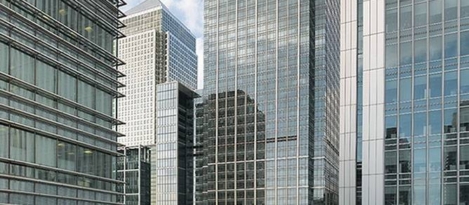July 12, 2016
British workers’ patience with slow technology lasts just sixty seconds 0
 The patience of British workers to put up with slow and malfunctioning technology lasts just sixty seconds on average before they lose their temper, according to new research from tech firm Crucial. The survey of 2,000 Brits claims that one in five (21 percent) lose their patience once a week, a fifth (19 percent) every couple of days, and 7 percent kicking off over slow technology every few hours. And when slow technology does strike, it takes 60 seconds on average before people lose patience. However, some Brits lose it even quicker, with 32 percent saying they lose patience with slow technology after just 30 seconds. While there is no one single reason cited for a PC freezing, almost half (46 percent) of respondents said that opening web pages caused their PC to freeze. Other causes include opening programmes and apps (27 percent), opening files (21 percent), loading videos (17 percent) and when saving down an important file (12 percent).
The patience of British workers to put up with slow and malfunctioning technology lasts just sixty seconds on average before they lose their temper, according to new research from tech firm Crucial. The survey of 2,000 Brits claims that one in five (21 percent) lose their patience once a week, a fifth (19 percent) every couple of days, and 7 percent kicking off over slow technology every few hours. And when slow technology does strike, it takes 60 seconds on average before people lose patience. However, some Brits lose it even quicker, with 32 percent saying they lose patience with slow technology after just 30 seconds. While there is no one single reason cited for a PC freezing, almost half (46 percent) of respondents said that opening web pages caused their PC to freeze. Other causes include opening programmes and apps (27 percent), opening files (21 percent), loading videos (17 percent) and when saving down an important file (12 percent).







 A coalition of twenty major European telecommunications firms has come together to drive the rapid creation of a continent wide 5G network and warn national Governments and the EU of the dangers of over-regulation. The seven page document entitled the
A coalition of twenty major European telecommunications firms has come together to drive the rapid creation of a continent wide 5G network and warn national Governments and the EU of the dangers of over-regulation. The seven page document entitled the 


 The shortlist for
The shortlist for 
 It was Frank Lloyd Wright who said ‘a doctor can bury his mistakes but an architect can only advise his clients to plant vines’. His words will be ringing in the ears of London planners who have decided they need to do something about the blight of Rafael Viñoly’s reviled Walkie Talkie building at 20 Fenchurch Street, according to
It was Frank Lloyd Wright who said ‘a doctor can bury his mistakes but an architect can only advise his clients to plant vines’. His words will be ringing in the ears of London planners who have decided they need to do something about the blight of Rafael Viñoly’s reviled Walkie Talkie building at 20 Fenchurch Street, according to 
 According to
According to 
 Just one in three IT decision makers believe advances such as cloud-based solutions, big data and wearable tech will be available in their industry within the next 12 months, according to a new study from Capita. Although the report – Trends vs Technologies – has yet to be published, the firm has released some of its findings. Based on a survey of IT professionals in the insurance, finance, legal services and manufacturing sectors, the study analyses nine key organisational trends and the implementation of related technology. The report claims that while many decision makers describe a tech trend as being relevant to their industry, several barriers to implementation mean solutions are not yet ready and in many cases might be lagging behind consumer take-up of the new technology. The trends named in the report are Big Data, Digital Workplace, Artificial Intelligence, Internet of Things, Wearable Tech, Robotics, Cloud Based Solutions, 3D Printers and Virtual Reality.
Just one in three IT decision makers believe advances such as cloud-based solutions, big data and wearable tech will be available in their industry within the next 12 months, according to a new study from Capita. Although the report – Trends vs Technologies – has yet to be published, the firm has released some of its findings. Based on a survey of IT professionals in the insurance, finance, legal services and manufacturing sectors, the study analyses nine key organisational trends and the implementation of related technology. The report claims that while many decision makers describe a tech trend as being relevant to their industry, several barriers to implementation mean solutions are not yet ready and in many cases might be lagging behind consumer take-up of the new technology. The trends named in the report are Big Data, Digital Workplace, Artificial Intelligence, Internet of Things, Wearable Tech, Robotics, Cloud Based Solutions, 3D Printers and Virtual Reality.

 The overwhelming majority of UK employees (81 percent) are working beyond their contracted hours, claims a report from recruitment firm
The overwhelming majority of UK employees (81 percent) are working beyond their contracted hours, claims a report from recruitment firm 












